The Salt Lake Herald (1870 – 1909) – Herald Building (1905 – Present)
Introduction
Text-to-speech Audio
Images
The Herald Building was constructed in 1905 by architect John C. Craig. Iowa born, Craig was also responsible for the design of other historic buildings in Salt Lake City such as the Moxom Hotel, Salt Lake Stock Exchange, and the New Grand Hotel.
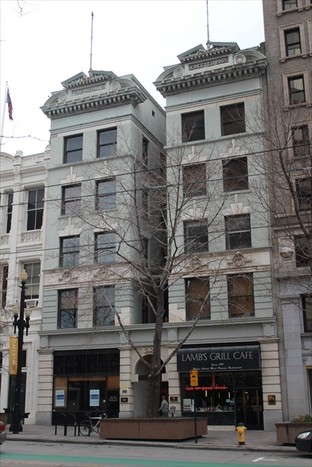
Alfred W. McCune was a railroad builder, mine operator, and politician from the state of Utah. He bought the Salt Lake Herald in 1989. His mansion, The Alfred McCune Home, is also on the Nationational Register of Historic Places.
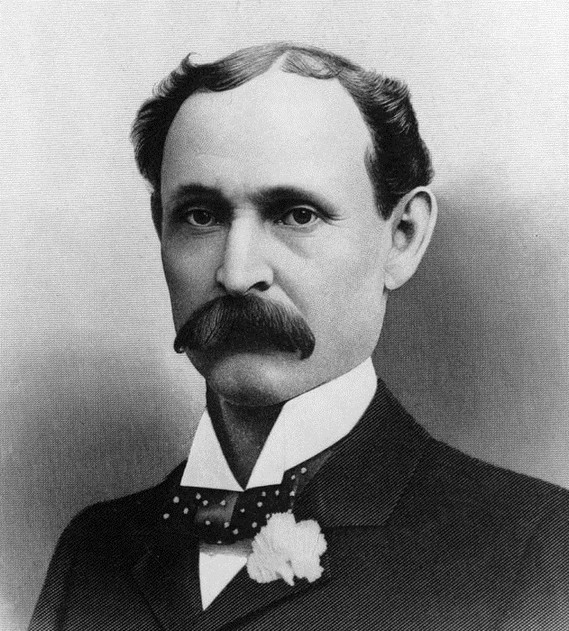
Up until it's closing in 2017, the Lamb's Grill Cafe had been one of the longest operating restaurants in Utah. Lamb's originally opened its doors in 1919 but moved in 1939 to its final location on the ground floor of the Herald Building.
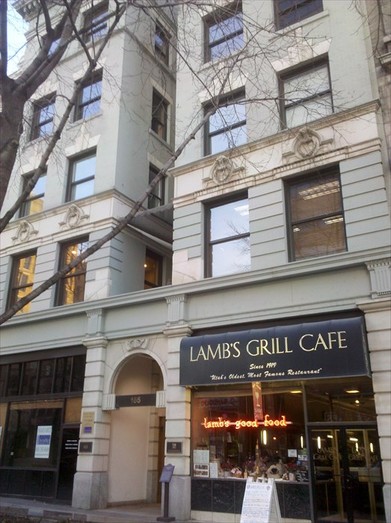
The original purpose of the Herald Building was to act as the headquarters of Pro-Mormon publication, The Salt Lake Herald. When they moved to this historic location in 1905, the Herald had already existed as a daily publication for over 30 years.
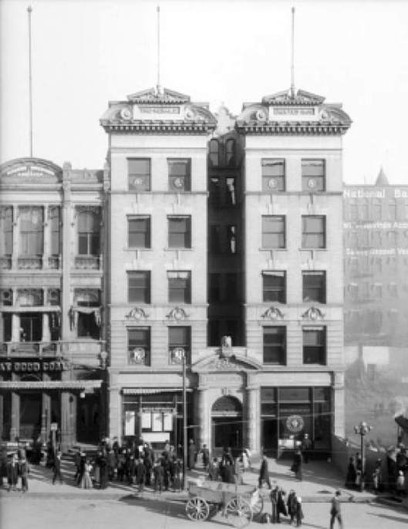
Many buildings in this era were constructed in a U-shaped style to allow light to reach interior offices, but more often than not the "U" opened to the rear or side of the structure. The Herald building is unique in that it opens at the front.

The Herald Building was added to the National Register of Historic Places in 1976. It is important not only for its architectural beauty but the rich history that it possesses.
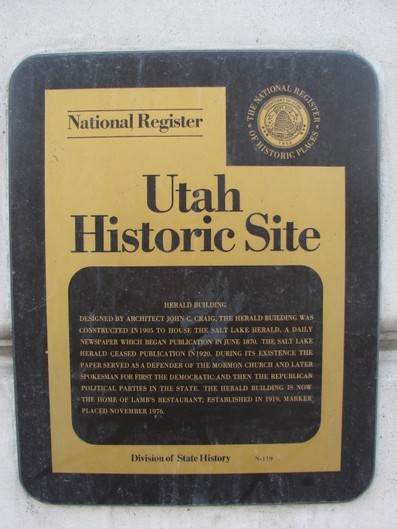
Backstory and Context
Text-to-speech Audio
Tension between members of The Church of Jesus Christ of Latter-day Saints (LDS) and non-members in Utah date back to the state's territorial period. In 1847, LDS church members began settling in the Utah Territory to escape religious persecution for their beliefs. At the time, Church leaders believed that isolation would allow them to practice their religion in freedom. Mormon ideologies such as popular sovereignty and the practice of polygamy prior to 1890 led to sharp criticism of LDS members and leaders in and beyond the territory. During the Presidential Election of 1856, the newly formed Republican Party accused the Mormons of gross immorality and pledged “to prohibit in the territories those twin relics of barbarism: polygamy and slavery.” 1
This tension, combined with mining booms, general westward expansion, and the appointment of federal officials to the territory, brought about what became known as the Utah War, lasting from May 1857 to July 1858. It was during this time of tension when members of the Mormon faith began to publish their perspectives in the form of articles and editorials. The Deseret News was the outlet for many of these articles prior to the creation of the Salt Lake Herald.
The development of Utah’s newspapers began with the founding of the Deseret News in Salt Lake City, June 15, 1850. The News was owned and controlled by the Mormon Church. While focusing on church-related subjects, the editors tried to keep the Mormon-Gentile conflict to a minimum. With the completion of the transcontinental railroad in 1869, a tremendous change took place in Utah. The Mormon-Gentile conflict intensified and in Utah journalism, this change was reflected in the birth of two daily newspapers, the Salt Lake Tribune and the Salt Lake Herald. 2
Born from the remnants of the Salt Lake City-Odgen Telegraph, an earlier pro-Mormon publication, the Salt Lake Herald began delivering their daily newspapers to the public on Sunday, June 5, 1870. Editor, E. L. Sloan cited the growing tensions between Mormons and Gentiles (non-members of The Church of Jesus Christ of Latter-day Saints) as a means of explaining the dire need for their newspaper and the militant defense of the Church and its members. While the Deseret News acted as the “The Organ of the Higher Priesthood,” and attempted to maintain a level of neutrality, the Herald was not above the journalistic mud-slinging that often highlighted nineteenth-century American Journalism. Their main source of competition came from the Salt Lake Tribune; a newspaper ran by Mormons who had been excommunicated by the Church for their opposition to temporal church policies. Beginning their own publication in 1871, the Tribune advocated accommodation with the Gentiles (the Mormon word for non-church members at that time). In addition to providing a voice for non-church members, the Tribune occasionally ran pieces that offered harsh criticisms of the LDS Church and its leaders.
The four-page morning daily was in many respects typical of western newspapers of the day. There were articles on agriculture, mining, religious and domestic interests as well as entertainment news. Articles on crime, vice, and natural disasters also appeared. Politically, the Salt Lake Herald was Democratic. Because it gave considerable space to controversial religious topics, however, editors of secular papers sometimes mocked the Herald as a mere proponent of the LDS Church. The Salt Lake Tribune's pet name for the Herald, for example, was the “Mormon Herald,” while the daily Salt Lake Democrat called it the “Church Echo.” Sloan aggressively responded to such slurs with strong counter editorials, a strategy not available to the publishers of the Deseret News, which endeavored to avoid any controversy that could harm the Church. 3
After the Church put an end to the practice of polygamy, topics of contention between the Herald and the Tribune increasingly reflected the political views of the two major parties. On May 24, 1891, the Salt Lake Herald announced that it was officially a Democratic newspaper.
As spokesman for the Democratic Party, the Herald continued to reflect its pro-Mormon sentiments. The Republican party, founded in 1856 on a platform dedicated to the abolishment of the "twin relics of barbarism" slavery and polygamy, was despised as much by Utah Mormons as by any Southern sympathizer. Southern Democrats had viewed the Mormon belief in polygamy similar to their own support of slavery based on states rights and had opposed the anti-polygamy measures of the Republican Party. While the Herald became the state's Democratic newspaper, the Tribune was clearly Republican and the two newspapers turned their attention to support and attack of the respective parties. 2
This political turn marked the end of the line for the official relationship between the LDS Church and the Herald. Because of growing involvement and investments in private businesses, and recognizing the need for greater cooperation with non-members, LDS leaders began to distance themselves from the Herald. In addition, more church members began supporting the Republican Party during the era of Reconstruction. By the 1890s, the newspaper was no longer seen as an editorial defender of the Church. In 1898, the Herald was bought by Democrat Alfred W. McCune in a failed attempt to secure a seat in the U.S. House of Representatives. The newspaper was later sold from McCune to Senator W. A. Clark of Montana, another Democrat whose interest laid less with the newspaper than with the Salt Lake, San Pedro, and Los Angeles railroads. Clark managed to triple revenues from the paper and it was during his ownership that the Herald Building was constructed in 1905.
1909 harkened the end of an era for the Salt Lake Herald when Clark sold the newspaper to a group of prominent Utah Republicans in August of that same year. The newspaper then became known as the Herald-Republic and lost many of its original Democratic subscribers. By 1920 - due to low viewership and several changes in ownership - publication of the Herald-Republic came to an end.
Sources
2 Salt Lake Herald Building. National Register of Historic Places. Accessed February 01, 2018. https://npgallery.nps.gov/NRHP/GetAsset/00b5e932-b5fe-4467-bc02-c2d3e5729833/?branding=NRHP.
3 About The Salt Lake herald. (Salt Lake City Utah) 1870-1909. Chronicling America. Accessed February 01, 2018. https://chroniclingamerica.loc.gov/lccn/sn85058130/.
Schindler, Hal. Matter of Time Before Utah Lost War on Polygamy. Utah History To Go. January 28, 1996. Accessed February 01, 2018. http://historytogo.utah.gov/salt_lake_tribune/in_another_time/012896-2.html.
Barlow, Jacob. Herald Building. Exploring with Jacob Barlow. September 11, 2016. Accessed February 01, 2018. https://jacobbarlow.com/2016/09/11/herald-building/.
About The Herald Building. The Herald Building. Accessed February 01, 2018. http://theheraldbuilding.com/about-the-herald-building/.
